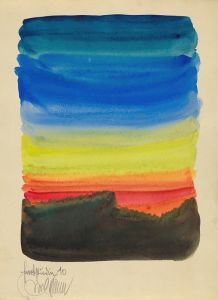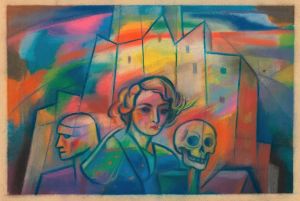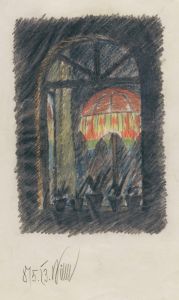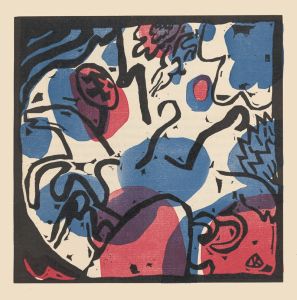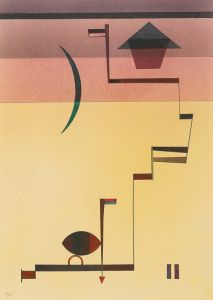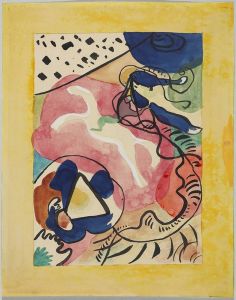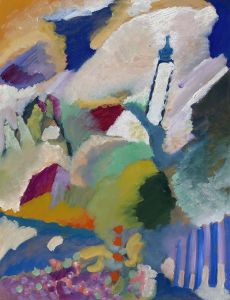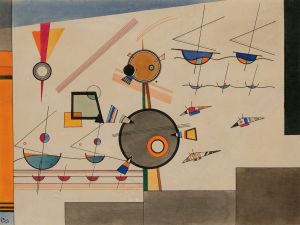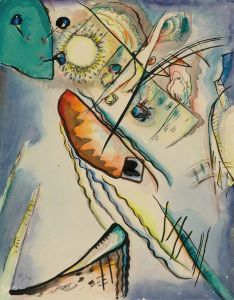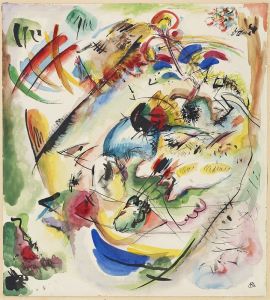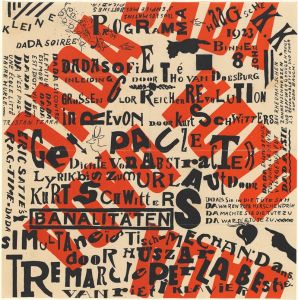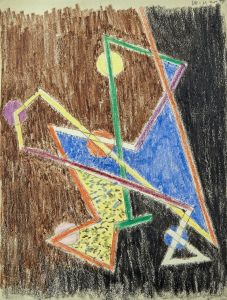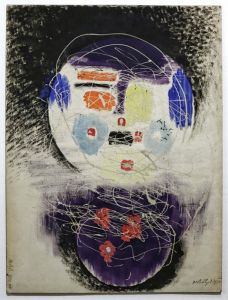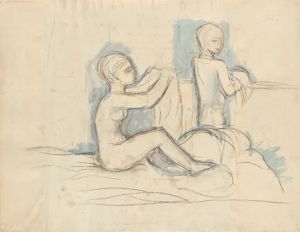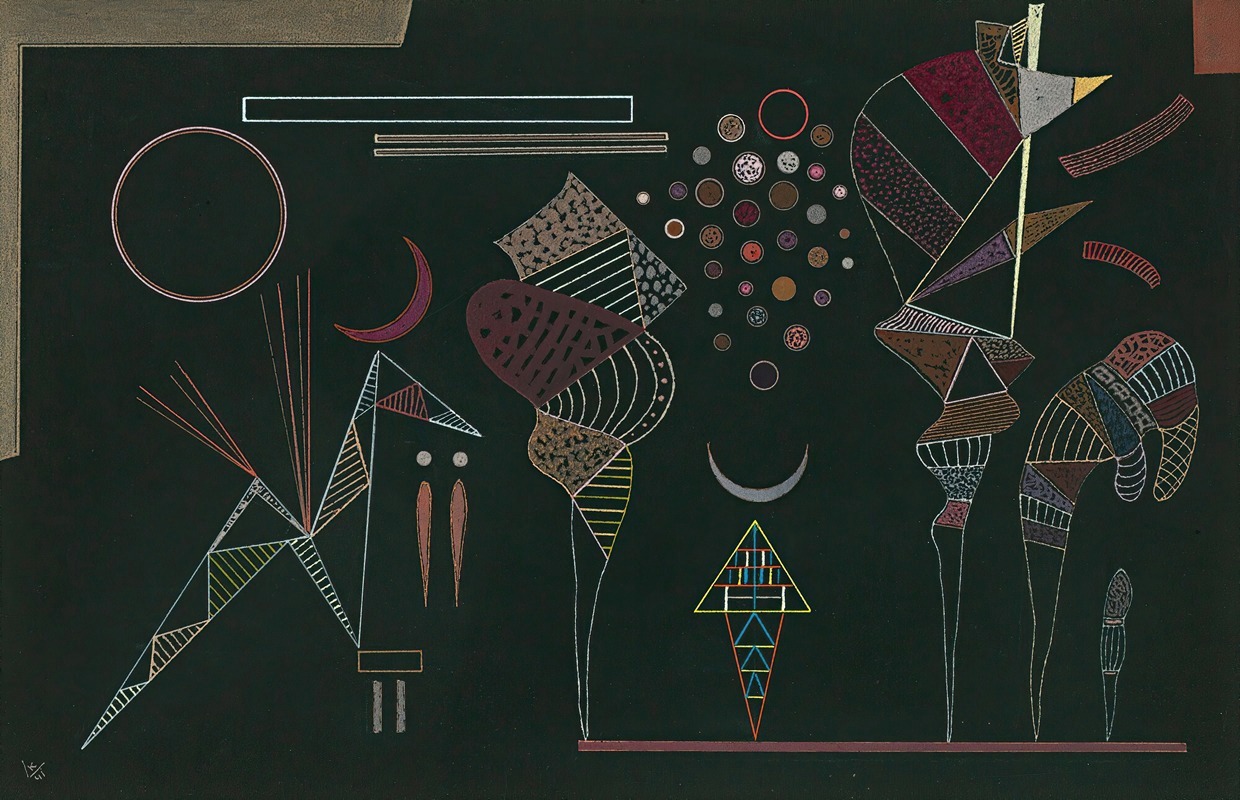
Étude Pour ‘contrastes Réduits’
A hand-painted replica of Wassily Kandinsky’s masterpiece Étude Pour ‘contrastes Réduits’, meticulously crafted by professional artists to capture the true essence of the original. Each piece is created with museum-quality canvas and rare mineral pigments, carefully painted by experienced artists with delicate brushstrokes and rich, layered colors to perfectly recreate the texture of the original artwork. Unlike machine-printed reproductions, this hand-painted version brings the painting to life, infused with the artist’s emotions and skill in every stroke. Whether for personal collection or home decoration, it instantly elevates the artistic atmosphere of any space.
Étude Pour ‘contrastes Réduits’ is a work by the renowned Russian painter Wassily Kandinsky, a pivotal figure in the development of abstract art. Kandinsky, born in 1866 in Moscow, is often credited with painting one of the first purely abstract works. His artistic journey was deeply influenced by his synesthetic experiences, where he perceived colors and sounds as interconnected, which significantly impacted his approach to art.
The painting Étude Pour ‘contrastes Réduits’ was created during a period when Kandinsky was exploring the relationships between form and color, a central theme in his work. This study, as suggested by the title, focuses on the concept of "reduced contrasts," which reflects Kandinsky's interest in the dynamic interplay between different visual elements. The term "étude" indicates that this piece was likely a preparatory work or a study, which Kandinsky often used to experiment with ideas that would later be developed in larger compositions.
Kandinsky's work during this period was heavily influenced by his theoretical writings, particularly his book "Concerning the Spiritual in Art," published in 1911. In this text, he articulated his belief that art should transcend mere representation and evoke deeper spiritual and emotional responses. He proposed that colors and shapes could be used to express the artist's inner life and emotions, a philosophy that is evident in Étude Pour ‘contrastes Réduits’.
The painting is characterized by its abstract forms and a subtle palette, which may include muted tones and gentle contrasts. Kandinsky's use of color and form in this work reflects his desire to create a visual language that could communicate beyond the literal and the concrete. His compositions often feature geometric shapes, lines, and curves, arranged in a way that suggests movement and harmony, inviting viewers to engage with the work on an intuitive level.
Kandinsky's time at the Bauhaus, where he taught from 1922 to 1933, also influenced his approach to art. The Bauhaus was a hub for modernist ideas, and Kandinsky's interactions with other artists and architects there enriched his understanding of form and function. This environment encouraged experimentation and the breaking down of traditional boundaries between different art forms, which is reflected in the innovative nature of his studies and paintings.
Étude Pour ‘contrastes Réduits’ exemplifies Kandinsky's commitment to abstraction and his belief in the transformative power of art. His work laid the groundwork for future generations of abstract artists and continues to be celebrated for its pioneering spirit and profound impact on the art world.
Kandinsky's legacy is preserved in numerous collections worldwide, and his works are frequently exhibited in major museums and galleries. His contributions to art theory and practice have cemented his status as a key figure in the history of modern art, and his explorations of color, form, and spirituality remain influential to this day.





